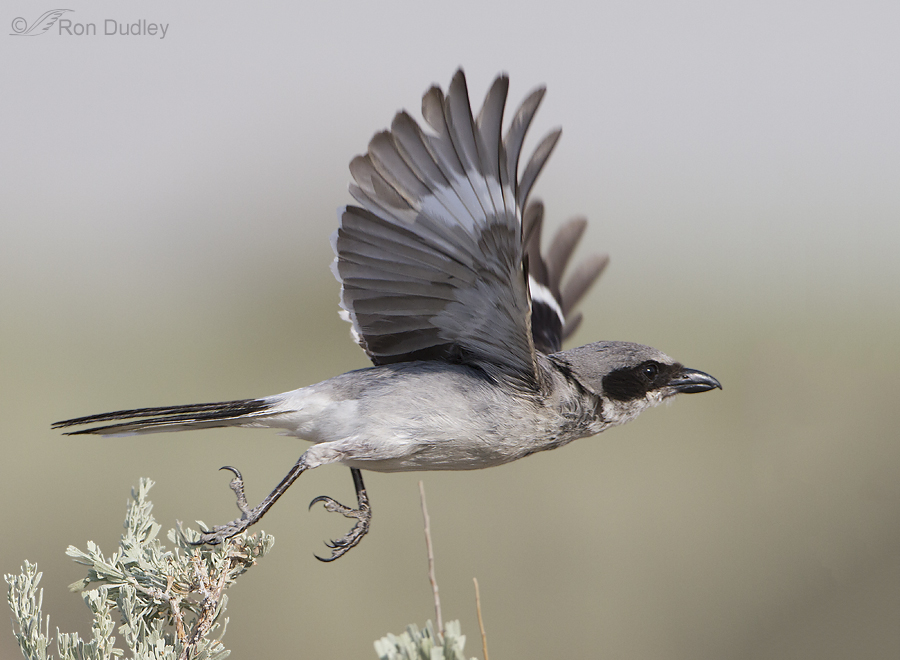Last month I was able to get close enough to this adult Loggerhead Shrike that I had to remove my teleconverter in order to give me enough wiggle room when it took off so that I didn’t clip any body parts (a rare event for me with the more skittish adults.) Significantly more often than 9 times out of 10 something goes wrong with a shot like this – the bird takes off away from me, I don’t have enough light and/or shutter speed or the setting or background are a mess. This was one I thought worked out pretty well.
1/3200, f/6.3, ISO 500, 500 f/4, natural light, canvas added for composition
During much of the year the breast, belly and neck of these adult birds are white but you’ll notice that this shrike is “wearing to dark” – as the plumage becomes worn the darker bases of the feathers that we don’t usually see are exposed, so feathers in those areas now appear significantly darker than usual (as was documented and discussed in this post several weeks ago).
Since that discussion, which included knowledgeable comments from others, I’ve noticed the same phenomenon (wearing to dark) in several other species, including Chukars.
It’s amazing how much I learn from my readers. Thanks for that!
Ron



Ron–your incredible photos, like this one, AMOST make me think I MIGHT like shrikes. It’s hard to resist beauty, and this sure is a beautiful bird.
Funny, I notice that my personal feathers are definitely not “wearing to dark”! How about you?
Mikal, Nope, as you can see from my personal thumbnail my feathers have either been molted without replacement or are wearing to gray…
And it’s great for some readers too! Nice take-off shot too.
Thank you, Sonja.